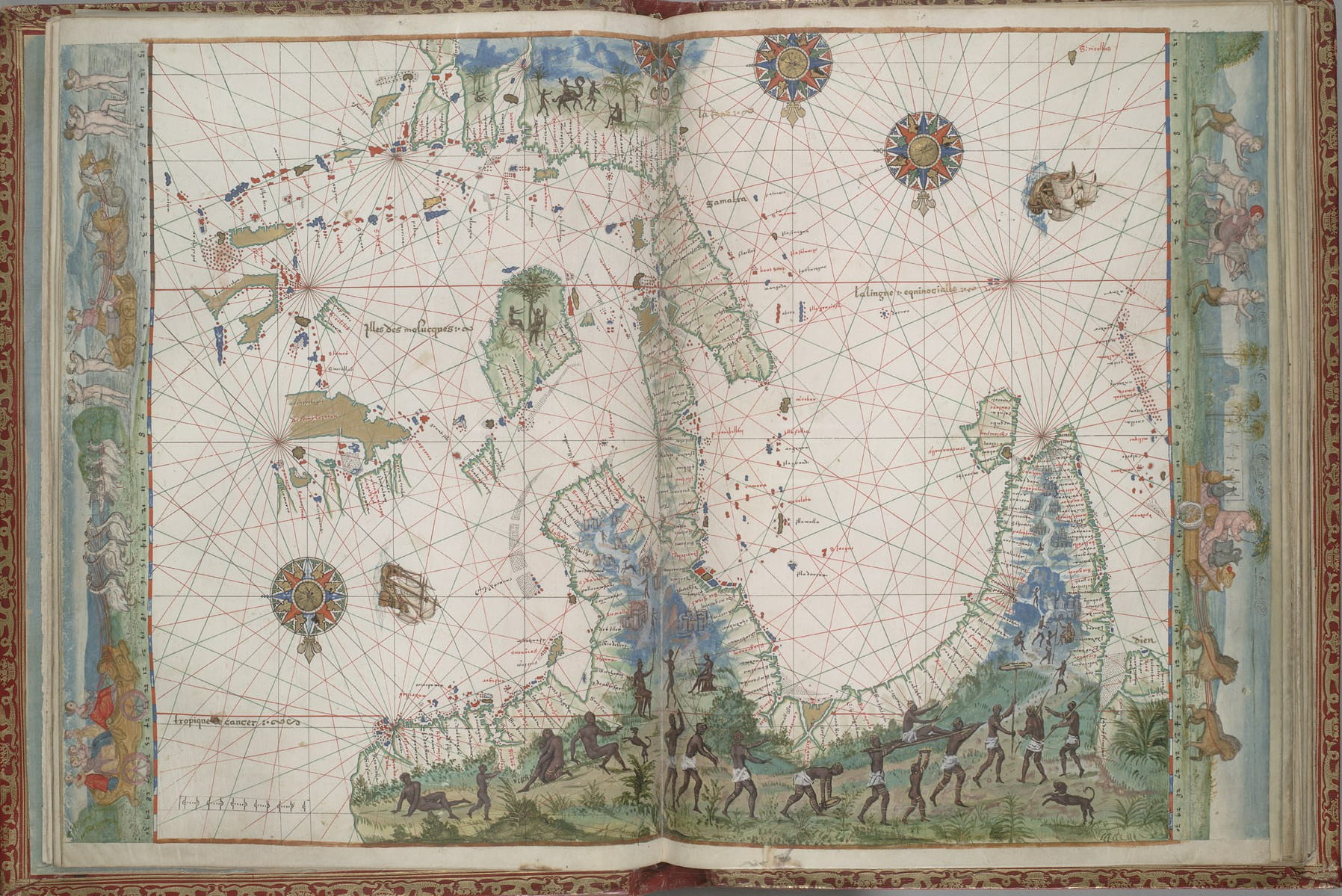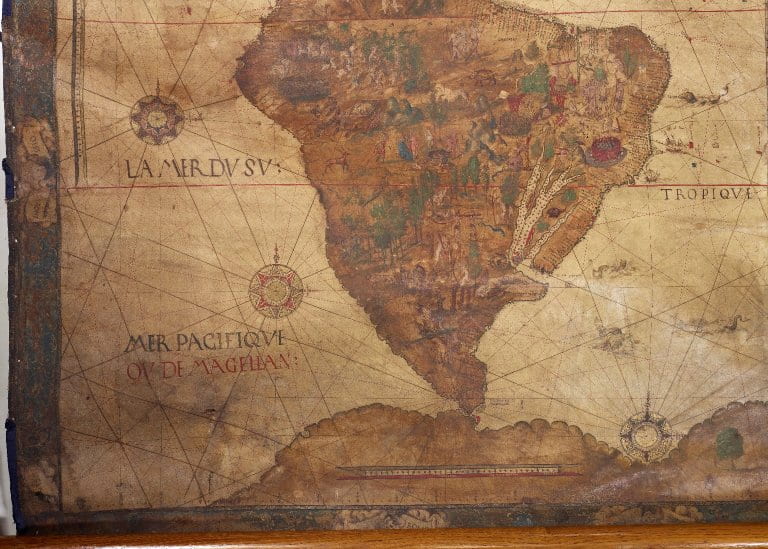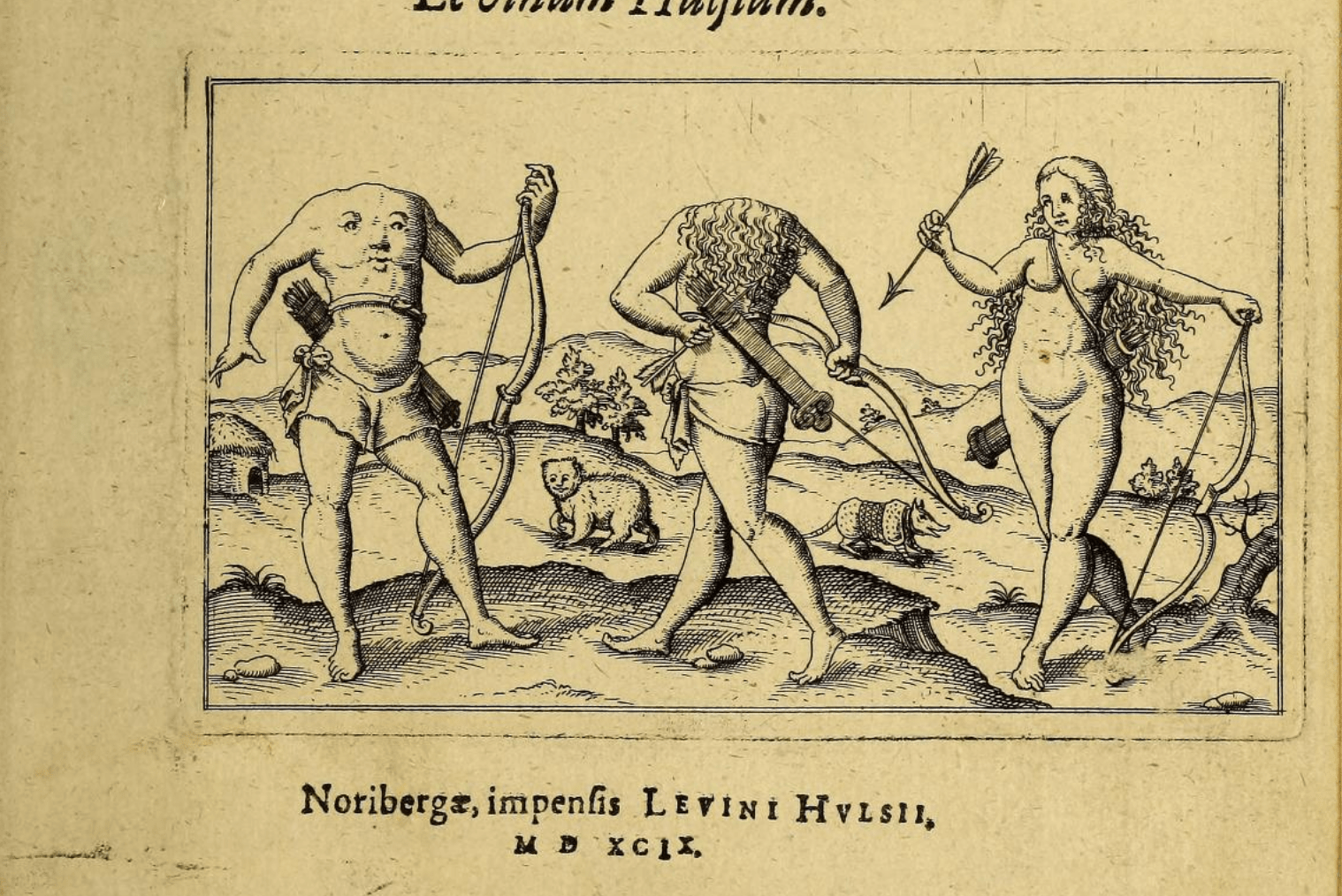In our inaugural podcast, Contributing Editor Cynthia Houng speaks with Prof. Surekha Davies about her book, Renaissance Ethnography and the Invention of the Human: New Worlds, Maps and Monsters (Cambridge University Press, 2016), winner of the 2016 Morris D. Forkosch Prize for the best first book in intellectual history.
Below, you’ll find some of the maps and objects that we discuss in our conversation. Follow the links to explore each object in greater detail.

Vallard Atlas, 1547, Map 2, Terra Java. The Huntington Library, HM 29.

Pierre Desceliers, Detail of World Map (Mappe monde), 1546. The University of Manchester Library, FR MS 1*.
Explore other parts of this large map (it is 260 x 130 cms in size!).
![Nieuwe_Caerte_van_het_wonderbaer_[...]Raleigh_Walter_btv1b84924380](https://jhiblog.org/wp-content/uploads/2018/02/nieuwe_caerte_van_het_wonderbaer_-raleigh_walter_btv1b84924380.jpg)
J. Hondius, Nieuwe Caerte van het wonderbaer ende goudrijcke landt Guiana, gelegen onder de Linie Aequinoctiael tusschen Brasilien ende Péru. nieuwelick besocht door Sir Water Ralegh Ridder van Engelandt in het jaer 1594, 95 ende 1596 (New Map of the Wonderful, Large and Rich Land of Guiana…), Bibliothèque nationale de France, département Cartes et plans, GE D-14317.

Detail of the frontispiece to J. Hondius, Kurtze wunderbare Beschreibung. Dess Goldreichen Königreichs Guianae im America, oder newen Welt, vnter der Linea Aequinoctiali gelegen: so newlich Anno 1594. 1595. vnnd 1596. von dem wolgebornen Herrn, Herrn Walthero Ralegh…, Nuremberg, 1599. The John Carter Brown Library, Accession Number 0918.
Explore the entire book.

Jan van Kessel, America (from The Four Continents), 1666, oil on copper. Bayerische Staatsgemäldesammlungen, Alte Pinakothek, Munich, inv. no. 1913
A note on the music in this podcast:
The music on this podcast was recorded by Paul Bowles in Morocco in the late 1950s.
Today, we remember Bowles as the author of The Sheltering Sky, but he was also a composer with an interest in ethnomusicology. That interest, coupled with his belief that Moroccan musical traditions were threatened by post-Independence modernization efforts, led Bowles to propose, in 1957, that the Library of Congress sponsor a project to record Moroccan music in all of its breadth. The project was, in Bowles’s words, “a fight against time.” In 1959, with the support of the Library of Congress and a grant from the Rockefeller Foundation, Bowles criss-crossed Morocco, setting up recording sessions in towns all over the country. He would make three more trips between 1959 and 1961. Bowles had no formal training in ethnomusicology, and his choices were guided by the contingencies of geography and travel–and by his own aesthetics.
In that sense, Bowles shares something with early modern travel writers and cartographers. They made forms of knowledge that bear some resemblance to modern-day academic disciplines, but belong, properly, to their own times. Bowles once told an interviewer, “I’ve always wanted to get as far as possible from the place where I was born. Far both geographically and spiritually. To leave it behind. One belongs to the whole world, not just one part of it.”
The Library of Congress maintains the Paul Bowles Music Collection. If you like what you hear, some of these recordings are available from Dust-to-Digital as a four-CD set, the Music of Morocco.



1 Pingback